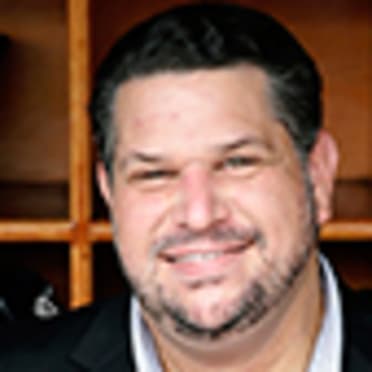Shapiro's exec imprint can be found around MLB
Executive Access is running a series of throwback episodes from 2017, including this week’s episode featuring Blue Jays president and CEO Mark Shapiro, Blue Jays general manager Ross Atkins and Indians general manager Mike Chernoff.
Whenever Mike Chernoff picks up the phone to call another team about a potential trade, there’s a good chance he’s going to hear a friendly, familiar voice on the other end.
When you come up under Mark Shapiro, that’s just the nature of doing business.
“It’s fun to pick up the phone and call another team, because often there’s somebody who I’ve worked with at that team,” Chernoff said. “It can, from the outside, look like it would be harder if you know each other so well, but negotiating isn’t adversarial. When we negotiate for trades or contracts or anything like that, the better relationship you have with the person on the other side of the table, the easier it is to figure out where you might have crossover.”
Chernoff is a member of a not-so-exclusive club, one of more than a dozen current or former front-office decision-makers that came up under the tutelage of Shapiro, the Blue Jays’ current president and CEO.
On this week’s throwback episode of Executive Access, Chernoff and Blue Jays GM Ross Atkins join the podcast to discuss the collaborative culture they learned working under Shapiro, while Shapiro himself discusses why he has always believed such collaboration was an integral part of any front office’s success.
“We’re all in this to win a World Series, but I have believed more that the process leads to the result,” Shapiro said. “I’ve always viewed making it a great place to work, investing in and developing people, helping them to be the best they can be, helping them realize their goals and get their dreams to be part of the job. I get a tremendous -- maybe the most -- fulfillment professionally out of seeing those people do great things and achieve great things.”
David Stearns, Mike Hazen, Chris Antonetti, Derek Falvey and Ben Cherington are among those on Shapiro’s executive tree, leaving Shapiro’s fingerprints all around the league.
Even when Shapiro has found himself on the opposite side from a former protégé -- as he did in 2016, when his Blue Jays took on the Indians in the American League Championship Series just one year after he left Cleveland -- there can be feelings of mixed emotions.
“I celebrate with them when they celebrate and I bleed with them when they bleed,” Shapiro said. “When we play them, I still want to beat them; it’s just like a little brother you play. That’s how I felt when we played Cleveland [in 2016] in the playoffs. But I love those guys and I care about them and I’m pulling for them. In some ways, I played some small role in them getting the opportunities they got; they played just as big if not a bigger a role in helping me grow.”
When Shapiro left for Toronto, he hired Atkins -- who was Cleveland’s VP of player personnel -- as the Blue Jays’ new GM. Atkins had played five seasons in the Tribe's organization, but when his playing days were over, Shapiro hired him as a Minor League coach, eventually moving him into the front office.
“We had a great relationship when I was a player,” Atkins said. “I knew right away there was something special about the Cleveland Indians when my first day there, I was asked what I wanted to accomplish in my career, how I saw myself as a player, what I could get better at and how they could help in that process. That jumped out at me, which is what spurred my interest in what payer development meant and how I could have an impact on people. Because of that, Mark and I developed a relationship.”
Those relationships were not rare for Shapiro, who believes at the heart of every good front office is helping people grow into their jobs, even if it means losing them down the road.
“A big part of that is those guys challenging us to continue to learn and grow,” Shapiro said. “A learning environment, a learning culture, comes from getting really bright and talented people in and then turning them loose, empowering them to help make us better. Creating that understanding that that’s what we’re about, whether it be the intern, directors or the GM, we want to create an environment where everybody is looking to get the decisions right and grow and get better as an organization all the time.”
Chernoff pointed to Shapiro’s focus on the people -- not the jobs -- in his front office as his biggest takeaway from working under the longtime executive.
“The most important thing that I learned from Mark was, whatever it is that you’re focused on -- whether it’s the scouting side, the analytic side, whatever it is -- the people always come first,” Chernoff said. “The way that you build a culture, the way that you lead people, support people and ultimately treat people, that’s what’s going to lead to your success. Mark did an exceptional job in building that culture here, and I feel like that’s the legacy we’ve tried to keep in place since he left.
Listen to all three interviews on Executive Access, available on Apple Podcasts, Spotify, Google Play, Art 19 or wherever you get your podcasts.
